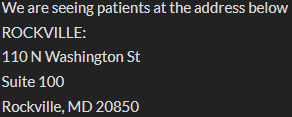Lower Back Pain After A Car Accident
There are two injuries that are common in car accidents, whether it is a small rear-ending collision or something larger than that. Neck pain and back pain. One or both are a frequent symptom, and the injured party doesn’t always feel it right away as it often becomes worse after a few days.
The spine and back are made up of an intricate array of muscles, tendons, vertebrae, spinal cord, and discs, all of which take the full force of the impact when a car behind you collides with yours. The severity of the injury depends on the impact on the vehicle, whether a seat belt was worn, and if an airbag went off. Seatbelt and airbag safety features are designed to prevent further injuries to you. They do this by cushioning the blow and minimizing strain on your back.
Seeking Help
This is one of the reasons that it is important to see a medical professional right after an accident. Pain in the legs, numbness and general pain in the back that comes and goes are all symptoms of a back injury. Waiting to get help will not only slow your healing but also will affect the viability of your insurance claim.
There are many different injuries that may cause lower back pain which is why it’s important to determine their cause. To process an insurance claim, the company needs to know how the extent of your medical bills, if you will miss work, or if it’s debilitating enough that you can no longer work.
Some of the back problems that commonly occur after a car accident include:
- Soft tissue tearing and bruising
- Compression fractures
- Herniated discs
- Axial bursts
- Dislocation or fractures
All of these have back pain as the main side effect, and the pain can range from mild to excruciating. Also, to diagnose these injuries, the doctors will need to perform tests which are often expensive. They may order any of the following types of diagnostic tests:
- CAT/CT scans
- X-rays
- MRIs
These tests focus on different things, whether that’s soft tissue, bones and fractures, or cartilage damage.
Treatment
Treatment depends on the nature of the injury, whether you need surgery, medication, chiropractic visits or physical therapy appointments to help ease the pain and let your back heal. These can also get expensive but are included in the economic damages you may be able to recover from those responsible.
Who Pays For It?
The liability of the accident will determine who pays for it unless you live in a no-fault state. No-fault states require that you use your insurance company to cover damages to the car, medical bills, and any required medical visits in the future. However, if you live in a tort state, which makes up the majority of the states, then it would depend on the who is responsible for the accident.
It may be advisable to seek the legal advice of a car accident attorney Des Moines IA relies on who can provide guidance after a review of your case.
Thanks to our friends and contributors from Johnston | Martineau PLLP for their insight into car accident cases.





